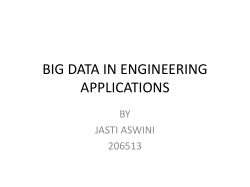
Helena Tome
Helena Tome Composition of blood The top layer is the plasma. The blood plasma acts as the medium where many substances are carried in dissolved or suspended form. • The plasma makes up 55% of the volume of blood. Plasma is a yellow colour, it is comprised of 90% water the other 10% consists mainly of proteins. • The cellular matter or formed elements comprise the remaining 45% of the volume of blood. It consists of platelets, white blood cells and red blood cells. The composition of blood. Three main types of cells: • Red blood cells • White blood cells • Platelets Parts of donated blood that are extracted include both labile products and stable products. Perishable substances do not have a long shelf life. These products must be refrigerated while being transported. Stable products have a longer shelf life compared to labile products. Extracted Parts of Donated Blood Red blood cells are separated by a centrifuge. After being in a centrifuge the blood plasma and red blood cells separate; the red blood cells sink to the bottom. The top layer of blood plasma is removed. Red blood cells are separated to increase the amount of haemoglobin without increasing the other substances in the blood. The haemoglobin is used to increase the oxygen carrying capacity to body tissues. This allows cells to respire at an increased rate. Red blood is therefore given to people with anaemia, acute blood loss, kidney failure and people who do not make enough blood to function normally. Extracted Parts of Donated Blood Platelets are important in the act of blood clotting. This product is separated by using a centrifuge at a slow speed to prevent pelleting. It is added to a humans blood to increase the blood clotting capacity. They are given to people who are going through cancer therapy or have cancer of the blood or lymph. They are also given to people suffering with blood loss. Extracted Parts of Donated Blood Plasma is the liquid portion of the blood. It is separated by centrifuging as the red blood cells sink. It contains clotting factors and increases the volume of the blood. It is therefore given to people with leukaemia, clotting disorders, who need adjustments of osmotic pressure and who have experienced blood loss. Extracted Parts of Donated Blood White blood cells are the infection fighting parts of the blood. They are separated by a centrifuge. They are extracted to boost the immune system of the recipient. The recipients are people who have just had a severe infection, who have low immune systems or do not produce enough white blood cells to function normally. Artificial bloods only function is to increase oxygen and carbon dioxide carrying capacity. It has a longer shelf life compared to donated blood and it does not need to be refrigerated. Artificial blood does not contain any infectious agents and allergens. It is not blood type specific this means that they can be given to anyone without a blood test. Artificial blood is needed as areas in the world do not have the correct facilities to collect and store fresh blood. Donated blood can carry diseases, artificial blood acts as a means of increasing oxygen concentration without the risk of disease. It is therefore needed in areas that do not have the means of screening for diseases. Artificial blood is accepted by every blood type; it therefore does not need to be screened for blood type. Bibliography Chidrawi, C & Robson, M 2008 Biology in Focus: HSC Course. McGraw-Hill Australia Pty Ltd HSC Biology Topic 1 ‘maintaning a balance’ 2005-2008 <www.keepitsimplescience.com.au> Mudie, K & Brotherton J 2004 Heinemann Biology 2nd ed. Malcolm Parsons http://www.google.com.au/imgres?num=10&um=1&hl=en&client=firefox-a&tbo=d&rls=org.mozilla:en-US:official&biw=1680&bih=887&tbm=isch&tbnid=OsMpjie6aLDBM:&imgrefurl=http://www.abc.net.au/science/articles/2008/08/20/2341009.htm&docid=GoJrgINHG9fokM&imgurl=http://www.abc.net.au/reslib/200808/r2 83851_1207851.jpg&w=285&h=214&ei=SlqxUKfjBuTqiAe4kYHAAw&zoom=1&iact=hc&vpx=4&vpy=277&dur=1654&hovh=171&hovw=228&tx=139&ty=82&sig=11125 5498630676197045&sqi=2&page=1&tbnh=130&tbnw=181&start=0&ndsp=43&ved=1t:429,r:17,s:0,i:186 http://www.google.com.au/imgres?um=1&hl=en&client=firefox-a&sa=X&tbo=d&rls=org.mozilla:enUS:official&biw=1680&bih=887&tbm=isch&tbnid=puvq6p2shXFV3M:&imgrefurl=http://en.wikipedia.org/wiki/Platelet&docid=hYwWcVMiznEPrM&imgurl=http://upl oad.wikimedia.org/wikipedia/commons/thumb/c/c5/Platelet_structure.png/220px-Platelet_structure.png&w=220&h=165&ei=UFuxUPENPCYiAfs0IGoAw&zoom=1&iact=hc&vpx=221&vpy=401&dur=5694&hovh=132&hovw=176&tx=128&ty=45&sig=111255498630676197045&page=1&tbnh=132&tbnw =167&start=0&ndsp=44&ved=1t:429,r:27,s:0,i:166 http://www.google.com.au/imgres?num=10&um=1&hl=en&client=firefox-a&tbo=d&rls=org.mozilla:enUS:official&biw=1680&bih=887&tbm=isch&tbnid=vbfBYpLkMT3eDM:&imgrefurl=http://www.beltina.org/health-dictionary/plasmablood.html&docid=3J5dAGKg_4wdsM&imgurl=http://www.beltina.org/pics/plasma.jpg&w=400&h=320&ei=luxUJiuErCviQed3oCwAw&zoom=1&iact=hc&vpx=4&vpy=188&dur=262&hovh=201&hovw=251&tx=126&ty=106&sig=111255498630676197045&sqi=2&page=1&tbnh =146&tbnw=182&start=0&ndsp=45&ved=1t:429,r:0,s:0,i:96 http://www.google.com.au/imgres?num=10&um=1&hl=en&client=firefox-a&tbo=d&rls=org.mozilla:en-US:official&biw=1680&bih=887&tbm=isch&tbnid=fsFjxNmbq6AvM:&imgrefurl=http://www.biologymad.com/bloodcirc/bloodcirc.htm&docid=GjkOl_I9ZTqCqM&imgurl=http://www.biologymad.com/bloodcirc/BloodC 12.gif&w=395&h=286&ei=luxUJiuErCviQed3oCwAw&zoom=1&iact=hc&vpx=1255&vpy=349&dur=252&hovh=191&hovw=264&tx=140&ty=110&sig=111255498630676197045&sqi=2&page=1&t bnh=142&tbnw=196&start=0&ndsp=45&ved=1t:429,r:15,s:0,i:141 http://www.google.com.au/imgres?num=10&um=1&hl=en&client=firefox-a&tbo=d&rls=org.mozilla:enUS:official&biw=1680&bih=887&tbm=isch&tbnid=EEEUx5YRGKeLMM:&imgrefurl=http://helid.digicollection.org/en/d/Jwho02e/9.html&docid=625yobly5rnHBM&img url=http://helid.digicollection.org/documents/who02e/p42b.gif&w=534&h=173&ei=Z1yxUIitAsyWiQfauoDQAw&zoom=1&iact=hc&vpx=4&vpy=216&dur=1017&hovh =128&hovw=395&tx=136&ty=73&sig=111255498630676197045&sqi=2&page=1&tbnh=84&tbnw=260&start=0&ndsp=41&ved=1t:429,r:0,s:0,i:96
© Copyright 2025











